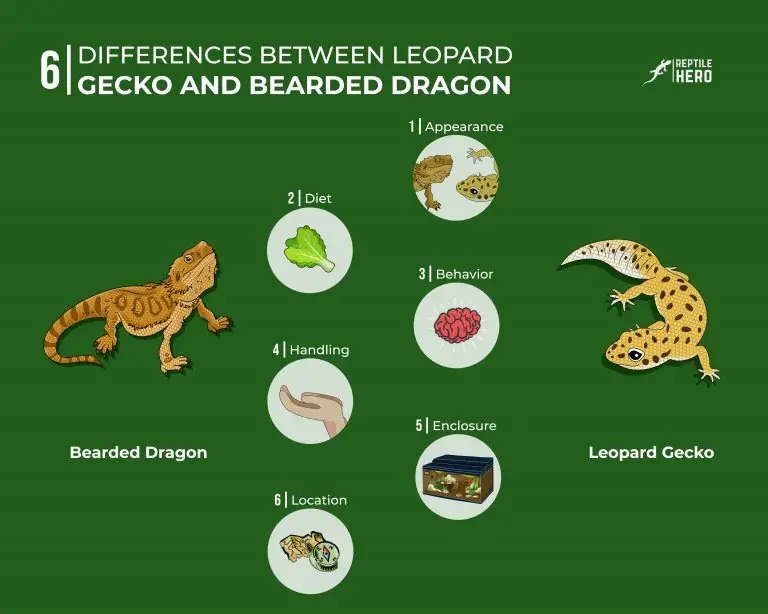3 DIY Incubator Ideas for Leopard Gecko Eggs
Incubators for leopard gecko eggs are not cheap at all! Professional incubator fridges can sell for at least one grand. If you’re only planning on getting a couple of eggs, then it definitely won’t be worth it. So what’s a regular pet parent to do?
It is possible to create affordable DIY incubators for leopard gecko eggs by using a container, heat source, and thermostat.
Sure, you can probably bag a 50-buck incubator online. But how can you be sure that it will work perfectly? Won’t it be better for you to just make your very own incubator at home? Check out the 3 ideas below to see which would best fit your needs!
1. Small DIY Incubator
Leopard gecko owners can opt to create their own mini incubators at home to cut back on costs. These are perfect for keepers that don’t intend to breed and sell geckos for business.
Coming in first is a mini-incubator that’s the easiest and cheapest to set up. It probably won’t even take you a whole hour to get everything done!
This is perfect for regular gecko pet parents who simply got surprised by their leopard geckos with eggs and have no plans to go into breeding.
Materials
Here are the materials for creating a small incubator for leopard gecko eggs:
- Plastic storage box with a solid lid
- Felt pads (here on Amazon)
- Soldering gun, drill, or big nail
- Heat mat (here on Amazon)
- On/off thermostat
I have also seen others use old fish tanks and other heating elements like ceramic heat emitters to create mini incubators at home.
Discovers the difference between heaters in our article on heating for leopard geckos.
Steps
Follow the steps below to make a small incubator for leopard gecko eggs:
- Attach the felt pads to all 4 corners of the makeshift incubator box.
- Stick the heat mat to the underside of the makeshift incubator box.
- Make one small hole in the lid using the soldering gun, drill, or nail.
- Connect the heat mat to the on/off thermostat.
- Plug the thermostat into a power outlet.
- Insert the corded probe of the thermostat in the box through the hole.
- Set the incubation temperature on the thermostat.
If there’s still a large gap in the hole after you inserted the cords, you can use another felt pad to cover it up.
2. Medium DIY Incubator
For regular keepers that want to transition into breeding leopard geckos professionally, a medium-sized egg incubator will be a great option. Making a couple of these will still be more affordable than buying two small fridge-type reptile incubators.
Now, if you have a sizable collection of leopard geckos with different morphs and you want to get into breeding them as a personal project, this DIY medium-sized incubator will work.
Materials
Here are the materials for creating a medium incubator for leopard gecko eggs:
- Old plastic cooler or styrofoam box
- Water bottles
- Hardboard
- Insulating foam (here on Amazon)
- Scissors
- Pliers
- Aluminum foil tape
- Wire cord with plug
- Heat tape
- Thermostat
If you want to skip the electrical works, you can also buy heat tapes with the wiring already fixed like this one on Reptile Basics Inc.
Steps
Follow the steps below to make a medium incubator for leopard gecko eggs:
- Connect the clamps to the wire cord.
- Attach the clamp to the heat tape with pliers.
- Wrap the clamps with electric tape for insulation—no wire should be left exposed.
- Stick the heat tape to the four walls of the cooler for even heating.
- Insert the thermostat probes inside the box through the cooler’s drainage holes.
- Cover the cooler’s drainage hole with some insulating foam to prevent heat from escaping.
- Place a couple of bottled water at the bottom of the cooler.
- Lay the sheet of hardboard on top of the water bottles.
- Connect the heat tape to the on/off thermostat.
- Plug the thermostat into a power outlet.
- Set the incubation temperature on the thermostat.
3. Large DIY Incubator
A big fridge-type egg incubator is necessary for leopard gecko owners who want to seriously breed and sell geckos. But rather than buying one, aspiring breeders can repurpose old beverage coolers into large incubators instead.
Planning on seriously breeding leopard geckos? Then you’d need a pretty big incubator.
But don’t worry, you don’t have to cash out thousands of dollars for one. You can create your own large fridge-type incubator!
Materials
Here are the materials for creating a large incubator for leopard gecko eggs:
- Old beverage cooler (fridge-type)
- Safety goggles
- Measuring tape
- Insulating foam
- Scissors
- Pliers
- Drill
- Aluminum foil tape
- Wire cord with plug
- Heat tape
- Thermostat
You don’t need to buy a brand new beverage cooler for this, you could look up online listings that offer secondhand units.
More importantly, don’t forget to wear a pair of safety glasses before you start drilling! Otherwise, you’ll have shards of metal flying into your eyes.
If you want to be extra safe, consider wearing a mask as well to avoid accidental ingestion and inhalation.
Steps
Follow the steps below to make a large incubator for leopard gecko eggs:
- Wipe down or clean the fridge-type cooler.
- Determine how much heat tape is needed to cover the sides and bottom of the cooler with the measuring tape.
- Use the drill to make a hole in the back or side of the cooler, just avoid hitting the fan and its mechanism.
- Attach the clamps or connector pieces to the heat tape.
- Stick the heat tape with the metal tape along the sides and bottom of the cooler.
- Insert the thermostat probes inside the box through the cooler’s drainage holes.
- Place the thermostat probe by the middle of the cooler for accurate readings.
- Cover the cooler’s drainage hole with some insulating foam to prevent heat from escaping.
- Connect the heat tape to the on/off thermostat.
- Plug the thermostat into a power outlet.
- Set the incubation temperature on the thermostat.
Can You Hatch Leopard Gecko Eggs Without an Incubator?
Regular leopard gecko keepers have successfully hatched eggs without makeshift and ready-made incubators. In place of incubators, gecko owners simply place the egg containers in their adult gecko’s tank.
For people who rescue leopard geckos, it’s normal to get females that have previously cohabbed with male geckos. Of course, such a housing set-up is sure to lead to egg-laying if both were already sexually mature when they were housed together.
So if the new owner decides to only incubate the clutch they get from the rescued female leopard gecko, they can do so without creating or buying an incubator.
They just place the medium-filled egg container in their pet gecko’s tank and then place rocks or tiles on top to prevent it from getting knocked around by the adult gecko. The container also needs its own thermometer and hygrometer for close monitoring.
I know a couple of people who have done this successfully with no problems whatsoever.
On even rare occasions, I have also heard of leopard gecko owners leaving the egg containers of their soft-scaled pets in rooms that have room thermostats. Some keepers from hotter areas like Florida even leave them in regular rooms without temperature control!
Further Questions
How long does incubation take for leopard gecko eggs to hatch?
It normally takes about 30–90 days or 1–3 months for leopard gecko eggs to hatch after incubation. Higher incubation temperatures typically result in quicker hatching, whereas lower incubation temperatures result in slower hatching.
Why do gecko eggs need humidity during incubation?
Do all gecko eggs need to be placed in an incubator to hatch?
Not all gecko eggs can be separated from their parents’ enclosure and placed in an incubator for them to hatch. Tokay gecko eggs, for instance, are laid on vertical surfaces and can be easily cracked and damaged if one tries to remove them. As such, the eggs will hatch in their parents’ enclosure without needing an incubator.
Summary of DIY Incubator Ideas for Leopard Gecko Eggs
Since ready-to-use incubators can cost anywhere between several hundred and a couple of thousand dollars, leopard gecko keepers can instead create DIY incubators. By doing so, they can safely hatch gecko eggs even if they are on a tight budget.
To make a DIY incubator, leopard gecko keepers and breeders need at least one of each: container, heat source, and thermostat. If any of the aforementioned materials are missing, one cannot make a fully functioning makeshift incubator for reptile eggs.

![Can You Have a Gecko and a Cat Together? [Yes, But…]](https://www.reptilehero.com/wp-content/uploads/2021/11/Gecko-and-cat-together-cc-768x614.jpg)

![Is It Possible To Overfeed A Gecko? [4 Signs]](https://www.reptilehero.com/wp-content/uploads/2021/12/overfed-gecko-cc-768x614.jpg)

![Picky Eater Leopard Geckos – How To Feed it [8 Solutions]](https://www.reptilehero.com/wp-content/uploads/2021/12/picky-eater-gecko-cc-768x614.jpg)

